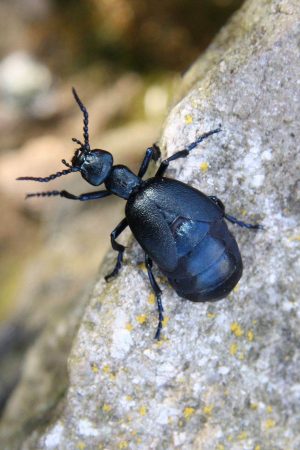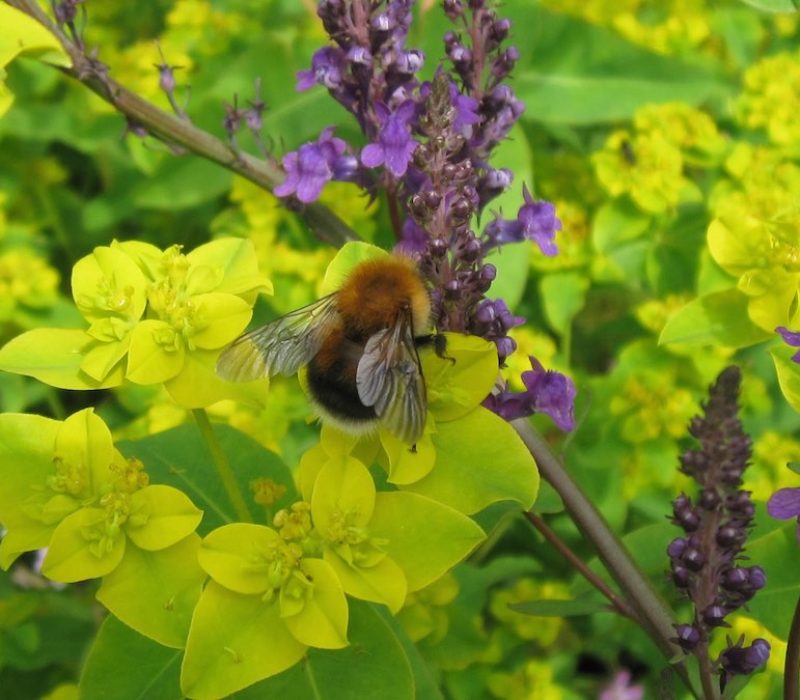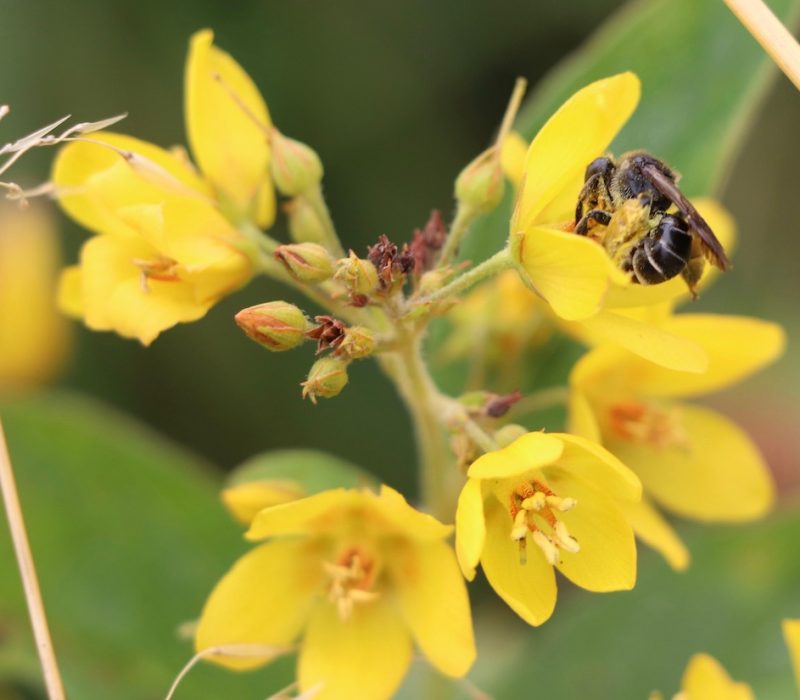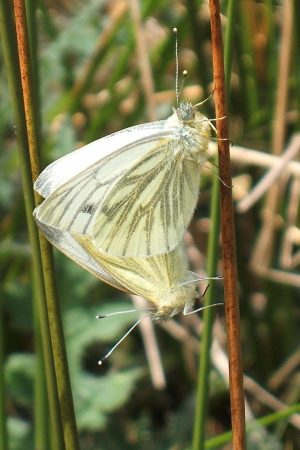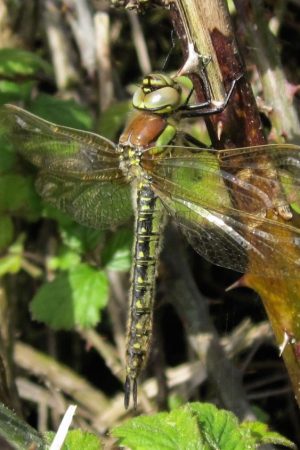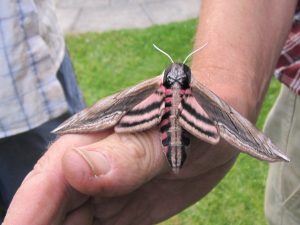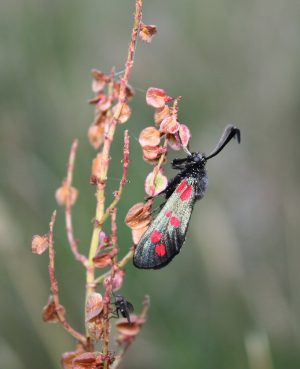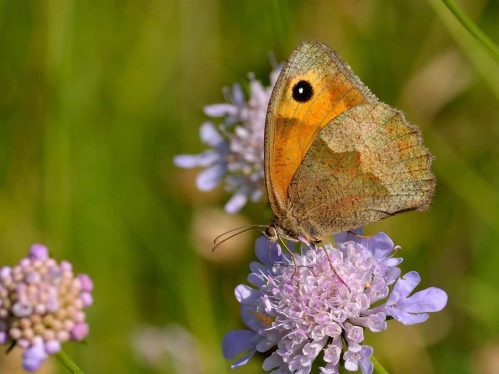
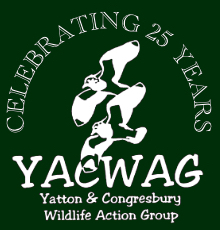
Wildlife
Insects
______
The number of insect species in the World is believed to be between six and ten million. There are more than 20,000 insects found in the UK and many of these are under threat as never before.
Below you will find the following sections:
Insects
Insects are from a class of animal called Invertebrates. This means they do not possess a vertebral column (i.e. a backbone or spine). What further defines an animal as an insect is it will have a chitinous exoskeleton, a three-part body (head, thorax and abdomen), three pairs of jointed legs, compound eyes and one pair of antennae. There are more than 40,000 invertebrate species in the UK.
The role of insects is of astounding importantance. Insects help break down and dispose of wastes in the environment, including dead animals and plants. They are the sole food source for many amphibians, reptiles, birds, and mammals. 90 percent of the world’s crops depend on pollinators. 80 percent of wild flowers depend on pollinators. These include the wild honey bee, bumble bees and other solitary bees and wasps. The majority of pollinators are, however, butterflies, moths and hoverflies.
Insects are from a class of animal called Invertebrates. This means they do not possess a vertebral column (i.e. a backbone or spine). What further defines an animal as an insect is it will have a chitinous exoskeleton, a three-part body (head, thorax and abdomen), three pairs of jointed legs, compound eyes and one pair of antennae. There are more than 40,000 invertebrate species in the UK.
The role of insects is of astounding importantance. Insects help break down and dispose of wastes in the environment, including dead animals and plants. They are the sole food source for many amphibians, reptiles, birds, and mammals. 90 percent of the world’s crops depend on pollinators. 80 percent of wild flowers depend on pollinators. These include the wild honey bee, bumble bees and other solitary bees and wasps. The majority of pollinators are, however, butterflies, moths and hoverflies.
Buglife is the only organisation in Europe devoted to the conservation of all invertebrates. The actively work to save Britain’s rarest little animals, everything from bees to beetles, worms to woodlice and jumping spiders to jellyfish.
Bees
- The largest and first to emerge is Bombus terrestris
- The slightly smaller Bombus lucorum has a white tip to its abdomen.
- Bombus lapidarius has a black body and bright orange tail
- Bombus pratorum is identified by a yellow bar on the thorax.
- Bombus hortorum has two yellow bands on the thorax.
- Bombus pascuorum is covered with ginger hair.
Rare Bee Found
The rare Yellow Loosestrife bee has been found in Yatton thanks to Yatton and Congresbury Wildlife Action Group (YACWAG).
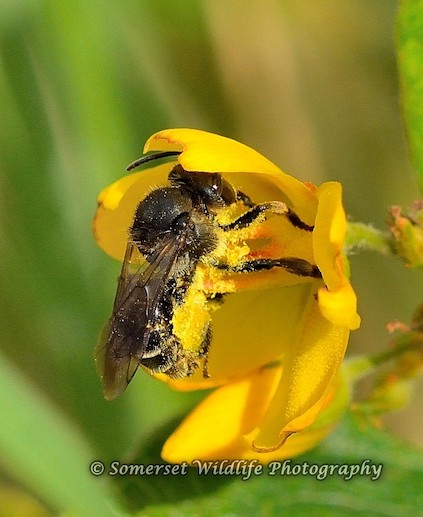 Yellow-loosestrife Bee
Yellow-loosestrife BeePhoto by Colin "Higgy" Higgins
There are over 250 species of bee in the UK, but one in ten species is facing extinction due to the chemicals used in the countryside and loss of habitat because of urbanisation, disease and the effects of climate change.
The Yellow Loosestrife bee is specific to one particular wild flower (yellow loosestrife) which would once have been much more common in the marshy ground around Yatton. Over the years intensive agriculture and drainage have reduced the amount of damp uncultivated ground where the plant can flourish and new plants are now found very infrequently.
When YACWAG bought two fields off Stowey Road in 2006 they were pleased to see Yellow Loosestrife growing along one of the ditch banks. The fields have been managed with the rare wild flowers in mind and this year there were large numbers of the plant along the edge of the fields. A colony also unusually sprang up a few years ago in the middle of the field.
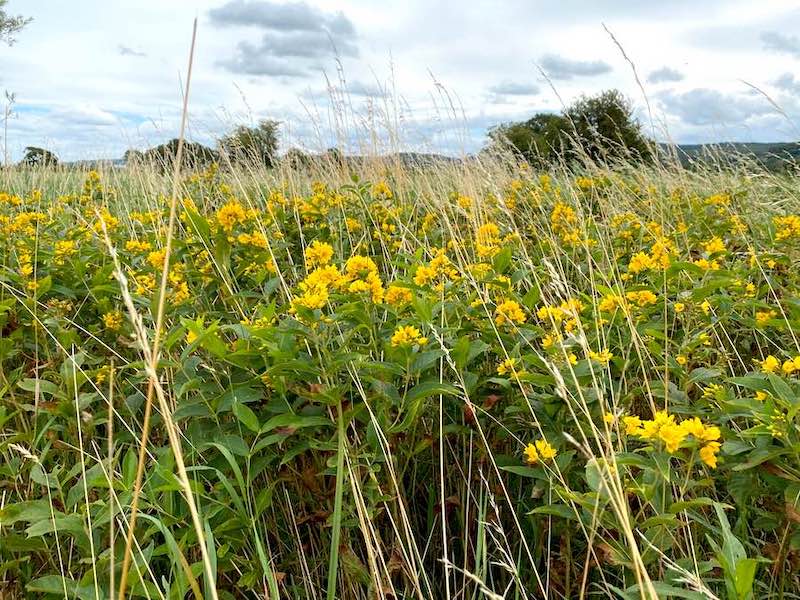
Stowey Reserve
Tony Moulin, Chairperson of YACWAG and an amateur entomologist himself, had read about a rare bee called the Yellow Loosestrife Bee. Not knowing much about it, but knowing that the plant associated with it was growing strongly in YACWAG’s fields, he set out this year to see if he could find it. He found one and then asked YACWAG member Colin Higgins, who is also an insect enthusiast and a local wildlife photographer, to see if he could get better photographs. With these Colin was able to obtain verification from the Bees, Wasps and Ants Recording Society that the bee on the Yellow Loosestrife was indeed the Yellow Loosestrife bee.
The Yellow Loosestrife bee is normally regarded as a species of south east England and is previously unknown from the Bristol Region and North Somerset. The nearest record comes from Westhay National Nature Reserve on the Somerset Levels. It makes its nests underground in ditch banks, waterproofing the chambers with an oil it makes from the pollen of Yellow Loosestrife. Tony says, "When you begin to understand the very specific requirements of some of our insects, it is easy to see why they are at risk of extinction. These bees may have been in small numbers in the fields north of Yatton for centuries, but if YACWAG had not bought the fields, if they had been sold for development or managed more intensively, then the colony would have been wiped out without anyone even knowing they existed. Our wildlife is so fragile."
The Bumblebee Conservation Trust is a UK organisation that makes efforts to monitor and conserve bumblebees and their habitat. It was founded in response to growing concerns about the "plight of the bumblebee".
North Somerset Beekeepers: the Blagdon, Clevedon and District Branch of Avon Beekeepers Association.
Butterflies
Butterflies and moths (see Moths section below) are indicators of the health of our environment because they are very sensitive to change. According to a report by the charity Butterfly Conservation in the last 40 years more than three-quarters of the UK's butterflies have declined. Butterfly and moth numbers have dropped catastrophically due to numerous environmental factors such as industrialised farming and the loss of countryside due to housing and other developments.
There are 56 species of butterfly in the British Isles and 75 per cent of those species are in decline. This is because of habitat loss, climate and weather patterns which impact on these sensitive insects. The struggle of butterflies to survive in the UK presents a serious warning about the state of the natural environment.
Up to 30 butterfly species have been recorded in Yatton and Congresbury but some are now locally extinct.
Despite the trend some species continue to do well and have extended their range – e.g. the Speckled Wood, Marbled White and Essex Skipper.
The Speckled Wood does well in YACWAG’s Littlewood Reserve; the Marbled White and Essex Skipper (only discovered in recent years) are increasing on Congresbury Moor. Other grassland species like the Meadow Brown and Ringlet, Small and Large Skippers and Gatekeeper are all in good numbers on our fields. Sadly Common Blue and Small Copper are now only occasionally seen.
Up until the late 1990s, 24 species had been recorded on the Yatton and Congresbury section of the Strawberry Line. Abundance of most species has declined in the last decade but due to YACWAG’s positive measures for the Common Blue, they are still breeding near Yatton station.
Cadbury Hill is also a good place to spot butterflies. In the 1980s there were 28 species here, including the elusive Purple Hairstreak, but the Wall Brown has been lost, as has the Silver Washed Fritillary (although it does sometimes stray from Kings Wood, the other side of the A370). The Brimstone butterfly breeds on Cadbury Hill and in Kings Wood on purging buckthorn and overwinters in ivy. Both woodlands are worth searching for butterflies, especially the newly created woodland rides.
The more mobile flyers can be seen in local gardens – Comma, Peacock, Red Admiral, Small Tortoiseshell, Small and Large White and also the Green-Veined White. The Orange-tip Butterfly breeds in a variety of habitats locally and also patrols gardens in the spring looking for the food plants of its caterpillars – cuckoo flower and garlic mustard.
(Reference: Butterflies of the Bristol Region. Barnett, Higgins, Moulin and Wiltshire. Published by BRERC. ISBN 0-9545235-0-4)
Butterfly Conservation was formed by a small group of dedicated naturalists in 1968 following the alarming decline of many beautiful butterflies. Its mission is the conservation of butterflies, moths and the environment.
Dragonflies
Dragonflies (order Odonata) are divided into two distinct sub-orders: Damselflies (Zygoptera) and Dragonflies (Anisoptera). There are 38 species of dragonflies and damselflies in the British Isles of which 16 can be found locally. Yatton and Congresbury are within the North Somerset Levels - a stronghold for many of these species.
The best places to see these insects are Kenn Moor and Congresbury Moor. Look along footpaths and the Strawberry Line from late April – October. Dragonflies and damselflies spend time away from water in sunlit hedges and woodland rides.
These insects are good indicators of the quality and quantity of local wetlands. Excessive clearing of water courses, water pollution and deepening channels are all detrimental to their survival. Most need marginal vegetation to complete their life-cycle.
Dragonflies (order Odonata) are divided into two distinct sub-orders: Damselflies (Zygoptera) and Dragonflies (Anisoptera). There are 38 species of dragonflies and damselflies in the British Isles of which 16 can be found locally. Yatton and Congresbury are within the North Somerset Levels - a stronghold for many of these species.
The best places to see these insects are Kenn Moor and Congresbury Moor. Look along footpaths and the Strawberry Line from late April – October. Dragonflies and damselflies spend time away from water in sunlit hedges and woodland rides.
These insects are good indicators of the quality and quantity of local wetlands. Excessive clearing of water courses, water pollution and deepening channels are all detrimental to their survival. Most need marginal vegetation to complete their life-cycle.
Eight species of damselfly are present locally:
- Blue-tailed – our commonest damselfly – an early coloniser of new ponds and cleared ditches.
- Azure – the second most common damselfly, found in ponds and ditches
- Variable – this is a national stronghold – found in coastal marshes, ditches and ponds.
- Common blue damselfly – despite its name not the commonest of our local blue damselflies.
- Large red damselfly – the earliest to emerge from ponds and ditches.
- Emerald damselfly – the only green one in our area – males are a metallic green, females brown-green.
- Banded Demoiselle – the most common of larger damselflies, found in slow-moving streams and rivers with muddy bottoms, e.g. the Congresbury Yeo.
- Less common is the Beautiful Demoiselle, found on faster flowing streams with stony bottoms in the local parishes. Both demoiselles hold their wings closed together above the body like a butterfly. The dark wings of the males are striking in their fluttery flight.
There are also eight species of dragonfly locally. These are generally larger than damselflies and rest with their wings open.
- The red Common Darter is the commonest of the medium sized dragonflies.
- The North Somerset Levels are the stronghold of the Black-tailed Skimmer, which generally is found on larger water courses.
- The fatter bodied Four Spotted Chaser is also a local speciality.
- The similarly coloured Broad Bodied Chaser is more commonly encountered and a visitor to garden ponds, especially new ones.
- The Southern Hawker is the most common larger dragonfly seen locally, often seen egg-laying in garden ponds. Their nymphs will live in the water for up to three years before emerging as adults.
- The Migrant Hawker breeds in ditches and ponds but can be seen away from water, hunting in gardens. Its population is increased by Continental migrants.
- The Emperor is the largest of the hawker dragonflies and can be seen flying over larger ponds and streams. Males are strong fliers with a slightly drooping abdomen.
- The earliest hawker to emerge, around May, is the Hairy Dragonfly, which has a distinctive hairy thorax. This area is a national stronghold for the species. It requires well-vegetated still water, and breeds on most of our reserves.
The British Dragonfly Society (BDS) was founded in 1983 by a small group of dragonfly enthusiasts and scientists. Its aims: are to carry out and support research on dragonflies, to conserve dragonflies and to engage the public with dragonflies and their wetland habitats.
Although dragonflies can be seen away from water, they can be encouraged to breed in your garden by making a wildlife pond. For further information please see YACWAG’s Wildlife Gardening page
Moths
There are over 2500 species of moths (both macro and micro) in the UK, with 1500 in the Bristol Region it is hard to get to know them all.
YACWAG has a specialist group carrying out moth trapping around its territory. Regular moth trapping events are held in a Yatton wildlife garden as well as occasionally on YACWAG reserves. The moths are attracted to light traps overnight and are then released unharmed in the morning giving members the chance to see them up close and learn more about them. Moths are mobile and can turn up in unexpected places, but by gardening in the right way, with plants and shrubs to attract them, there can be a better chance of seeing them and helping their conservation.
Some moths fly during the day and can be seen on YACWAG’s reserves and the Strawberry Line, e.g. 6 spot Burnet and Cinnabar moth (whose black and yellow striped caterpillars feed on ragwort.)
On the North Somerset Levels and Moors wetland species are supported by rhynes and their associated vegetation. One specialist is the Gold Spot moth.
There are even moths whose larvae start off life in the water and three of these can be found in the Yatton and Congresbury area: Small China-mark; Brown China-mark; Beautiful China-mark.
Other caterpillars feed on reeds and rushes, like the Large Wainscot, Bulrush Wainscot and from local reedbeds the Twin-spotted Wainscot and the Round-winged Muslin.
In local woodland and scrub are found the Rosy footman, Scallop Shell, Sallow kitten, while in wet woodland like YACWAG’s Littlewood reserve there are Bordered Beauty and the Poplar Hawkmoth.
In the past gardeners have found Deaths Head Hawkmoths feeding on their potatoes, and currant clearwings, which were once a pest on currants.
In the urban areas some of those seen frequently are the Marbled Beauty, whose caterpillar feeds on lichen, the Privet Hawkmoth, the Vapourer, Angle Shades, Large Yellow Underwing. A recent colonist is the Cypress Pug.
Silver Y and Humming-bird Hawkmoth are migrants which may be seen in the summer.
Butterfly Conservation was formed by a small group of dedicated naturalists in 1968 following the alarming decline of many beautiful butterflies. Its mission is the conservation of butterflies, moths and the environment.
UKmoths is online guide to the moths of Great Britain and Ireland.
© Copyright YACWAG, or original authors. All rights reserved. | Registered charity 1076362 | Privacy policy | Cookie policy | Terms & Conditions |Web design: StanfordGraphics
